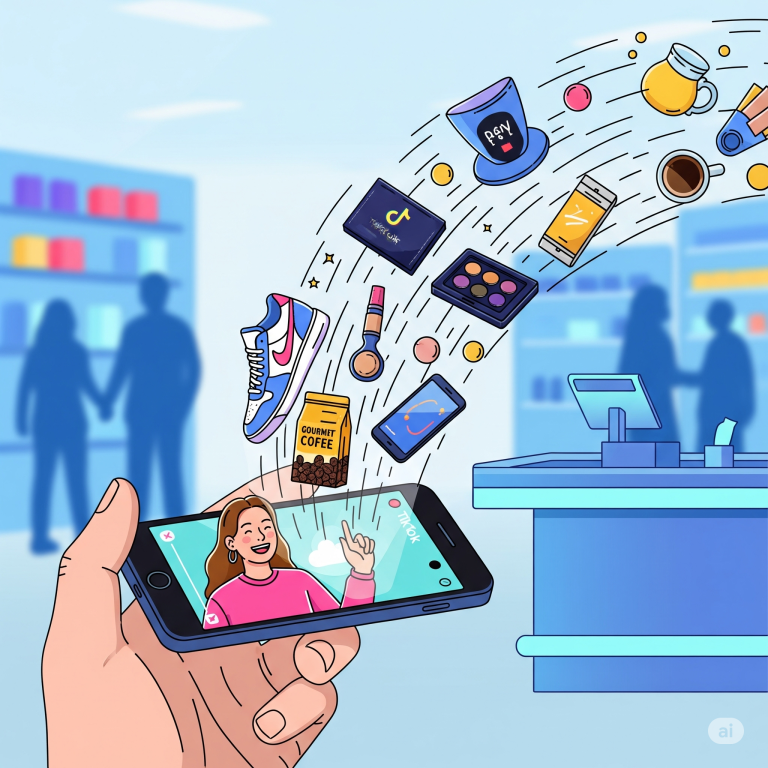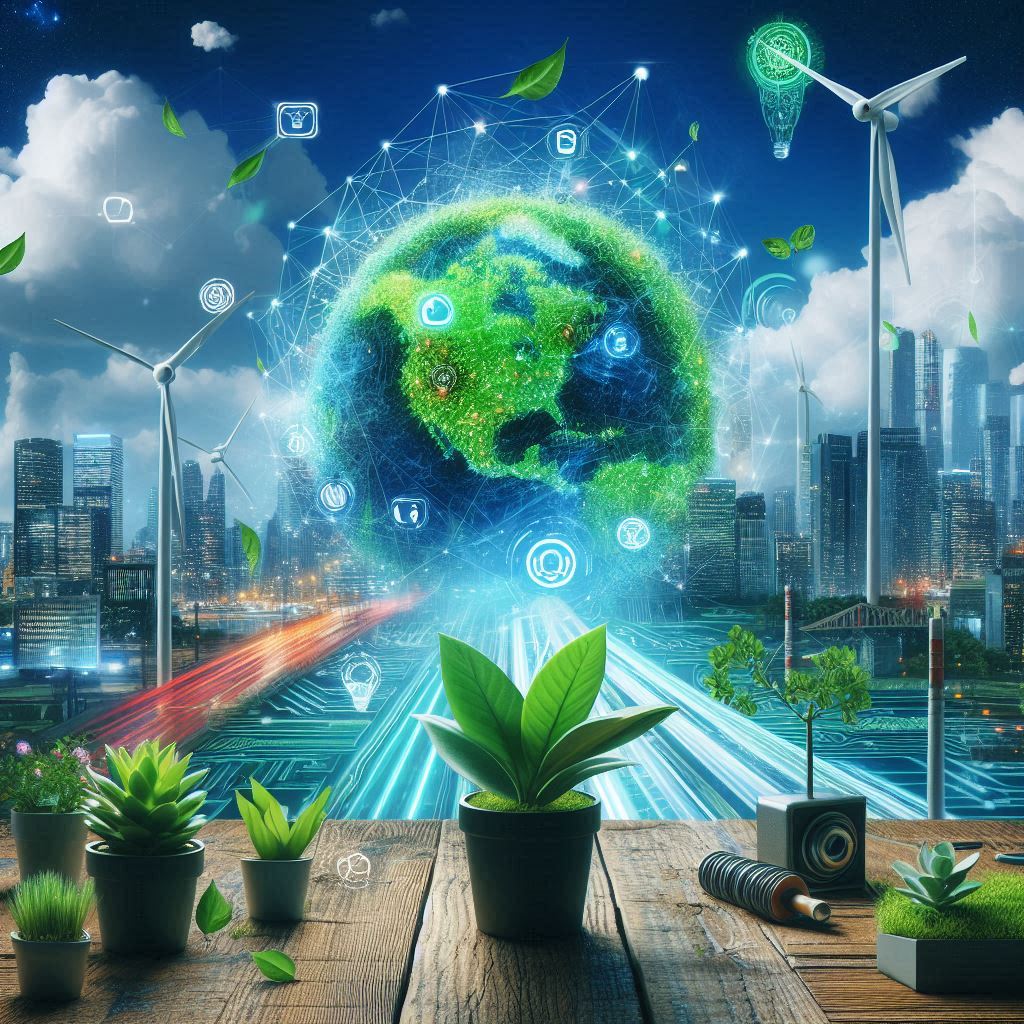
How AI and Smart Devices Are Making Our World Greener
AI and smart devices are playing a huge role in making our world greener. These technologies help us use resources more efficiently, which reduces waste and energy consumption. For example, AI can analyze data from smart devices to improve how we use electricity in homes and businesses, cutting down on unnecessary energy use. Smart thermostats, light bulbs, and appliances learn our habits and adjust themselves to save energy without us even noticing.
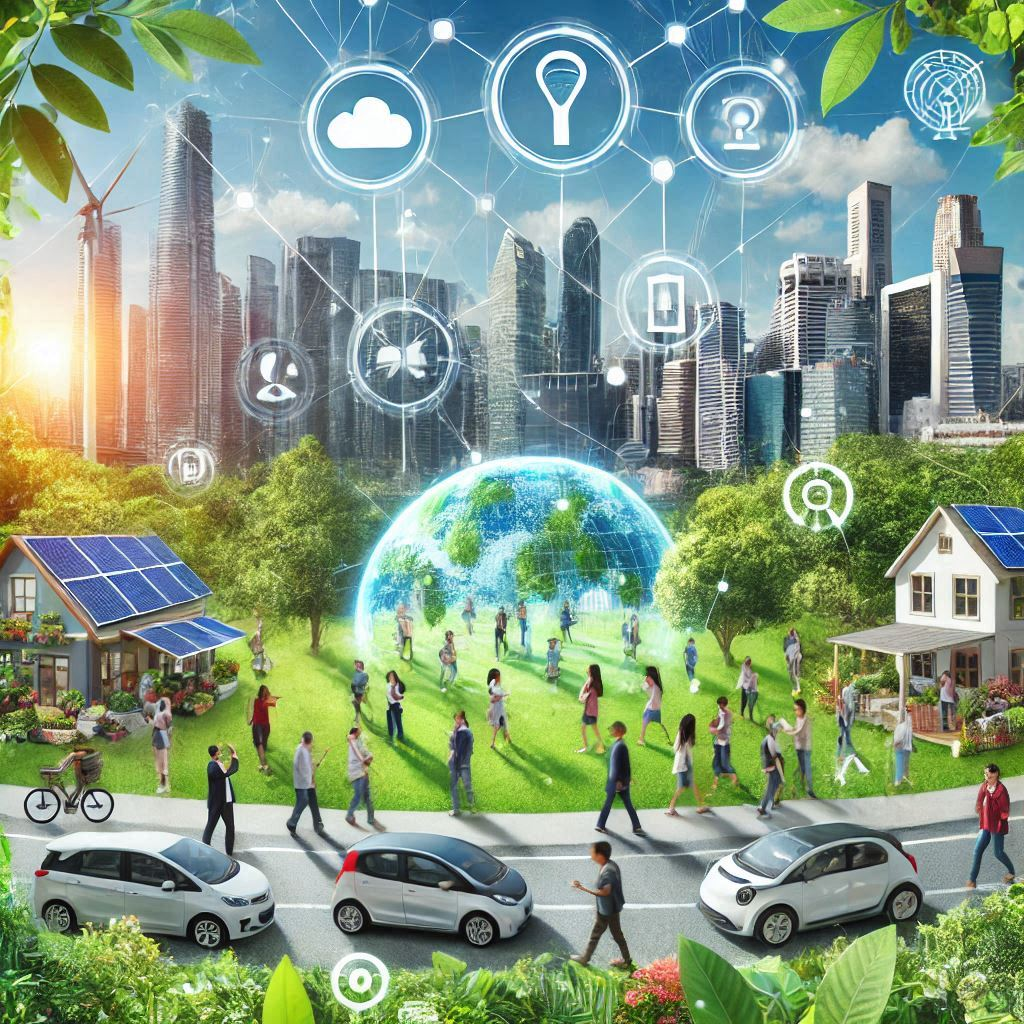
In agriculture, AI-powered sensors help farmers use water, fertilizers, and pesticides more precisely, reducing their environmental impact. Similarly, smart transportation systems use AI to reduce traffic congestion and lower carbon emissions.
These smart devices can even help monitor air and water quality, alerting us to pollution levels and helping cities take action. Together, AI and smart devices are creating a greener, more sustainable future by making it easier to use less and do more for the planet.
The Role of Technology in Fighting Climate Change
Technology is playing a huge role in the fight against climate change. With the help of AI and IoT, we can now monitor and manage the environment more effectively. For example, smart sensors powered by IoT track air quality, water levels, and energy usage, helping us to detect problems early and take action before they get worse. AI, on the other hand, helps us analyze huge amounts of data to predict weather patterns, optimize energy consumption, and create smarter, more efficient systems for industries like farming and transportation.
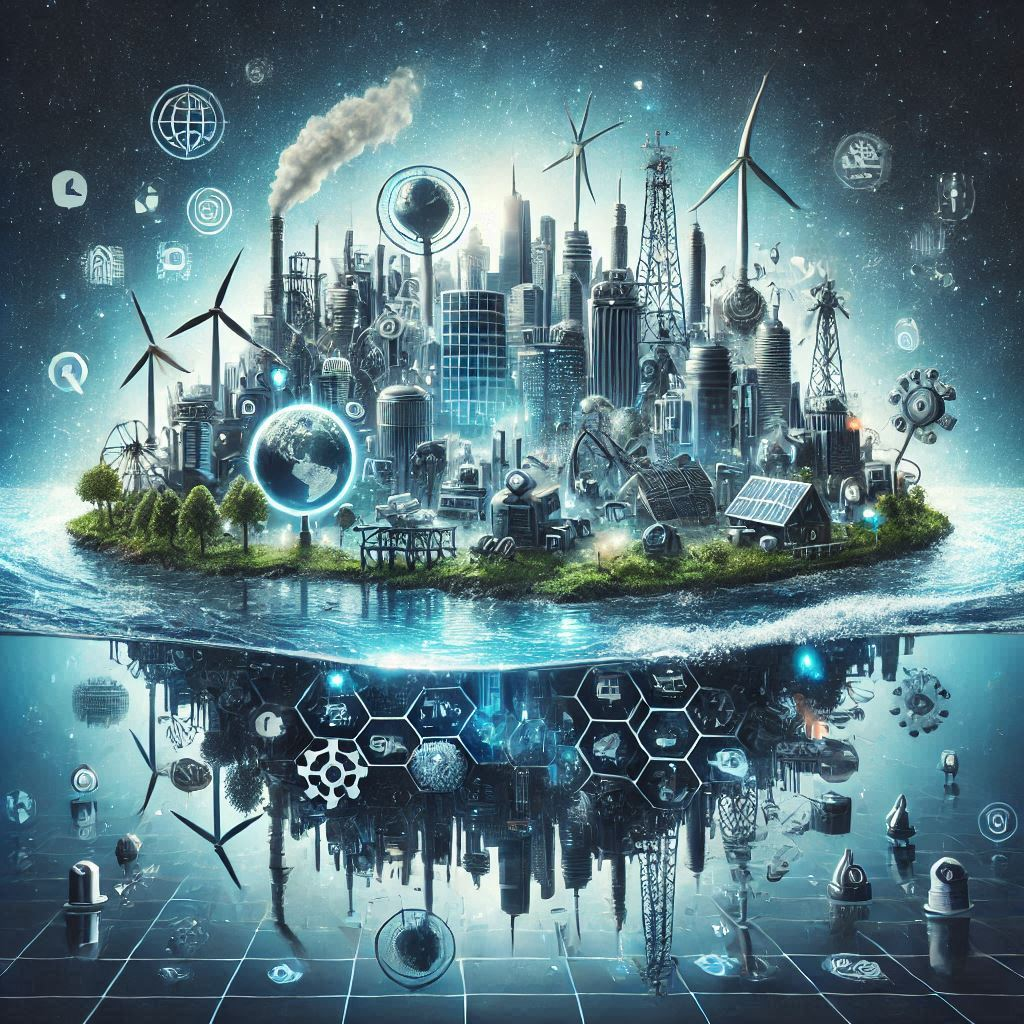
Renewable energy solutions are also benefiting from these technologies. AI is used to improve solar and wind power efficiency, while IoT devices allow for better energy distribution. Together, AI and IoT help reduce waste, lower carbon emissions, and make our everyday lives more sustainable. By combining innovation with action, technology is helping pave the way to a greener, healthier planet.
AI and IoT: The Key to a More Sustainable Future
AI and the Internet of Things (IoT) are playing a big role in creating a more sustainable future. By working together, these technologies help us use resources like energy and water more wisely, reduce waste, and make smarter decisions for the environment.
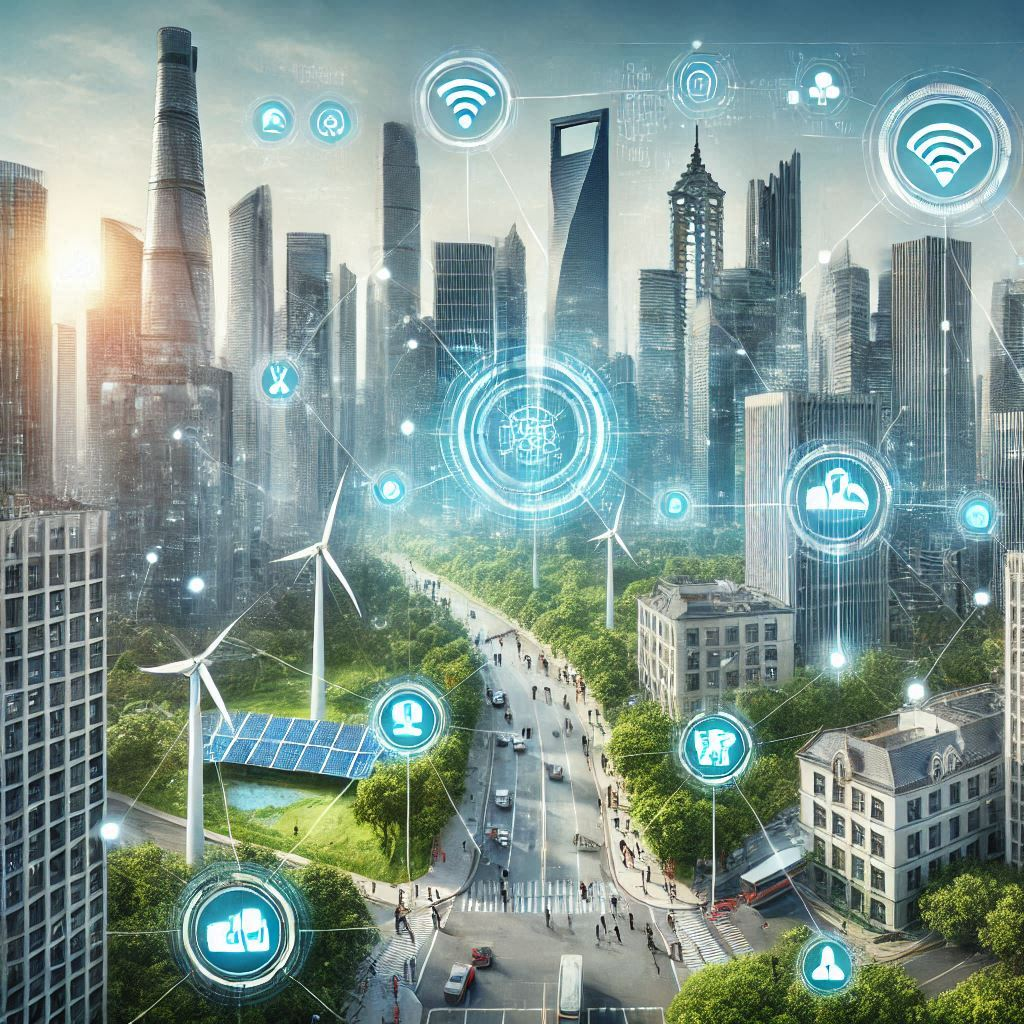
AI can analyze data from IoT devices to identify patterns and find ways to reduce energy consumption. For example, smart thermostats use AI to adjust home heating and cooling based on your daily habits, saving energy and lowering bills.
IoT devices, like smart meters and sensors, help monitor everything from water use in agriculture to air quality in cities. They send real-time data to help make decisions that benefit the environment, such as controlling irrigation systems or detecting pollution early.
Together, AI and IoT are making it easier to create sustainable systems in cities, businesses, and homes, helping us live in a way that protects the planet for future generations.
How Smart Gadgets Are Helping Save Energy and Resources
AI and IoT (Internet of Things) are making a big difference in how we save energy and resources every day. Smart gadgets powered by AI can automatically adjust settings to use less energy, without us even having to think about it. For example, smart thermostats learn our habits and optimize heating and cooling in our homes, saving electricity. Smart lights can turn off when they sense no one is around, and IoT sensors in factories monitor energy use to make sure machines aren’t wasting power.
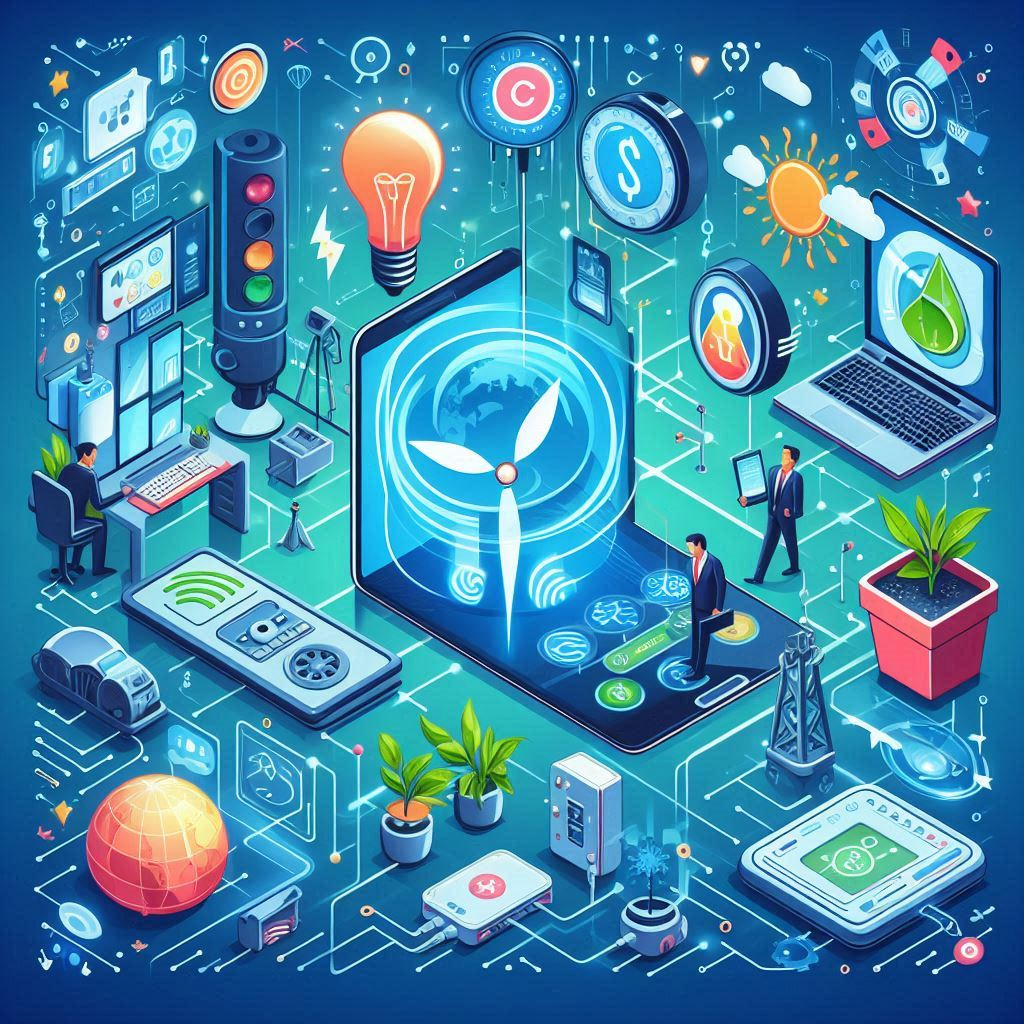
In addition, smart appliances like refrigerators, washing machines, and water systems use AI to track their efficiency and adjust their functions to conserve water and energy. These technologies don’t just help save on utility bills—they also help reduce our overall carbon footprint, contributing to a greener planet. With AI and IoT, we’re taking small steps every day to make our world more sustainable for future generations.
Tech Innovations That Are Helping to Protect the Planet
AI and IoT are playing a big role in making our planet more sustainable. AI, or artificial intelligence, is helping us make smarter decisions about how we use resources like energy and water. For example, AI systems can analyze huge amounts of data to find ways to reduce waste, cut down on energy use, and improve recycling processes. It can also predict things like weather patterns, helping us prepare for climate changes.
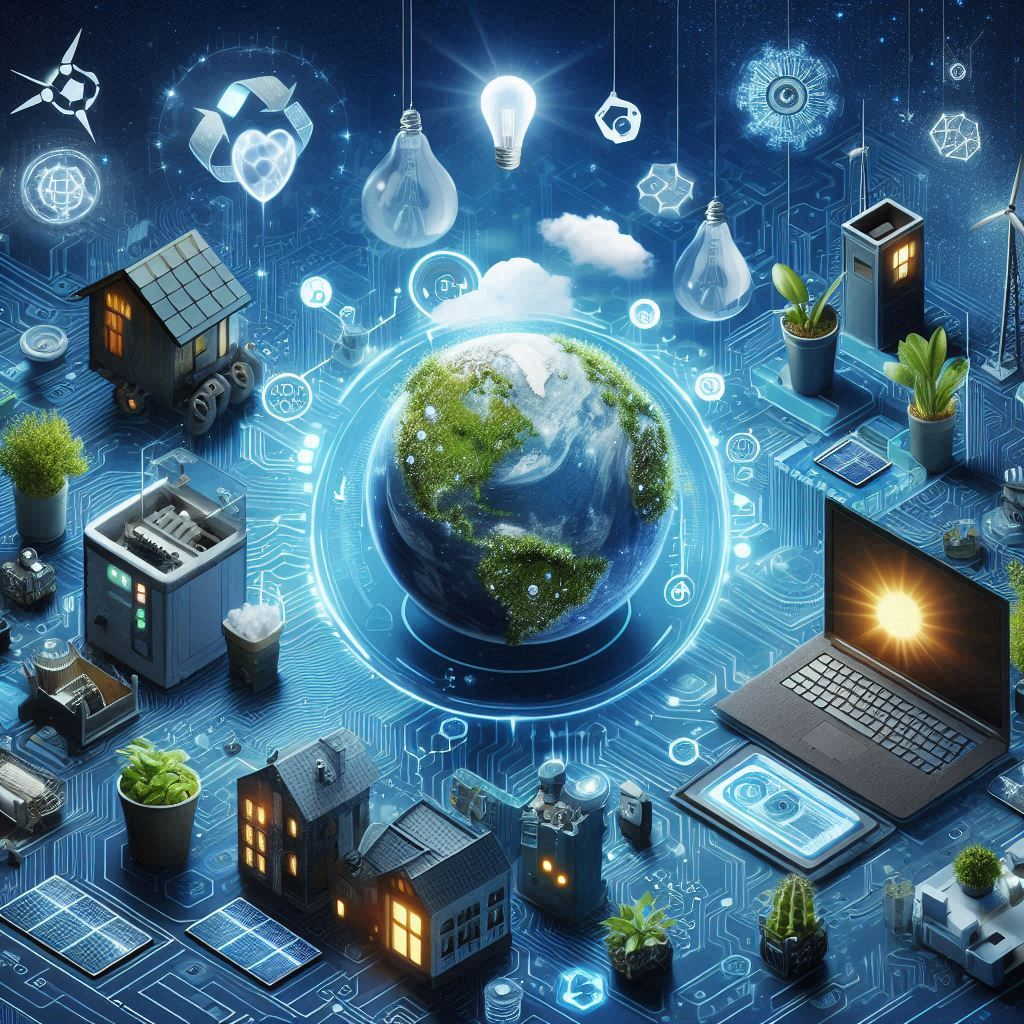
On the other hand, IoT, or the Internet of Things, connects everyday devices like smart thermostats, lights, and appliances to the internet. This allows them to work together to save energy and reduce our environmental impact. For instance, smart thermostats can adjust the temperature in your home to save energy when you’re not there.
Together, AI and IoT are helping us live more eco-friendly lives by making our technology smarter and more efficient, all while reducing harm to the planet.
The Environmental Benefits of Artificial Intelligence and IoT
AI and IoT are playing a huge role in helping the environment. By using smart technology, we can monitor and reduce waste, save energy, and lower carbon emissions. For example, smart sensors in homes and buildings can automatically adjust heating, cooling, and lighting, making energy use more efficient. This helps cut down on unnecessary energy consumption and lowers electricity bills.
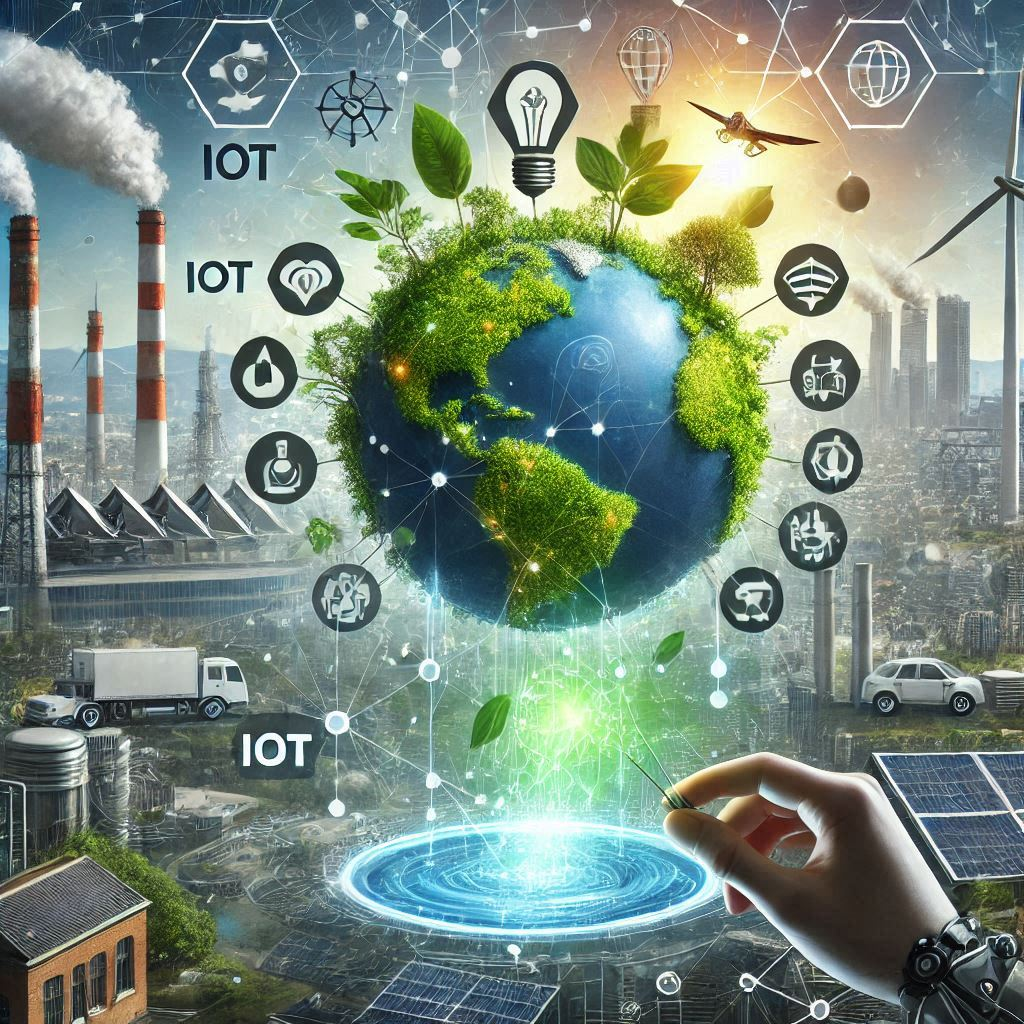
AI also helps analyze huge amounts of data to predict environmental changes and find the best ways to conserve resources. For instance, AI can optimize how water is used in farming, reducing waste and ensuring crops get the right amount of water without overuse. In industries, AI and IoT can help monitor pollution levels and detect leaks or spills, improving safety and preventing environmental damage.
In simple terms, AI and IoT are like smart helpers, making sure we use resources wisely and take better care of the planet. Together, they are driving a greener, more sustainable future.
How Technology Is Reducing Waste and Promoting Recycling
AI and IoT are changing the way we think about waste and recycling. With the help of smart sensors and AI-powered systems, we can track waste in real-time, helping businesses and households sort materials more effectively. IoT devices, like smart bins, can automatically detect when they’re full and send alerts to be emptied, reducing overflow and ensuring timely collection.
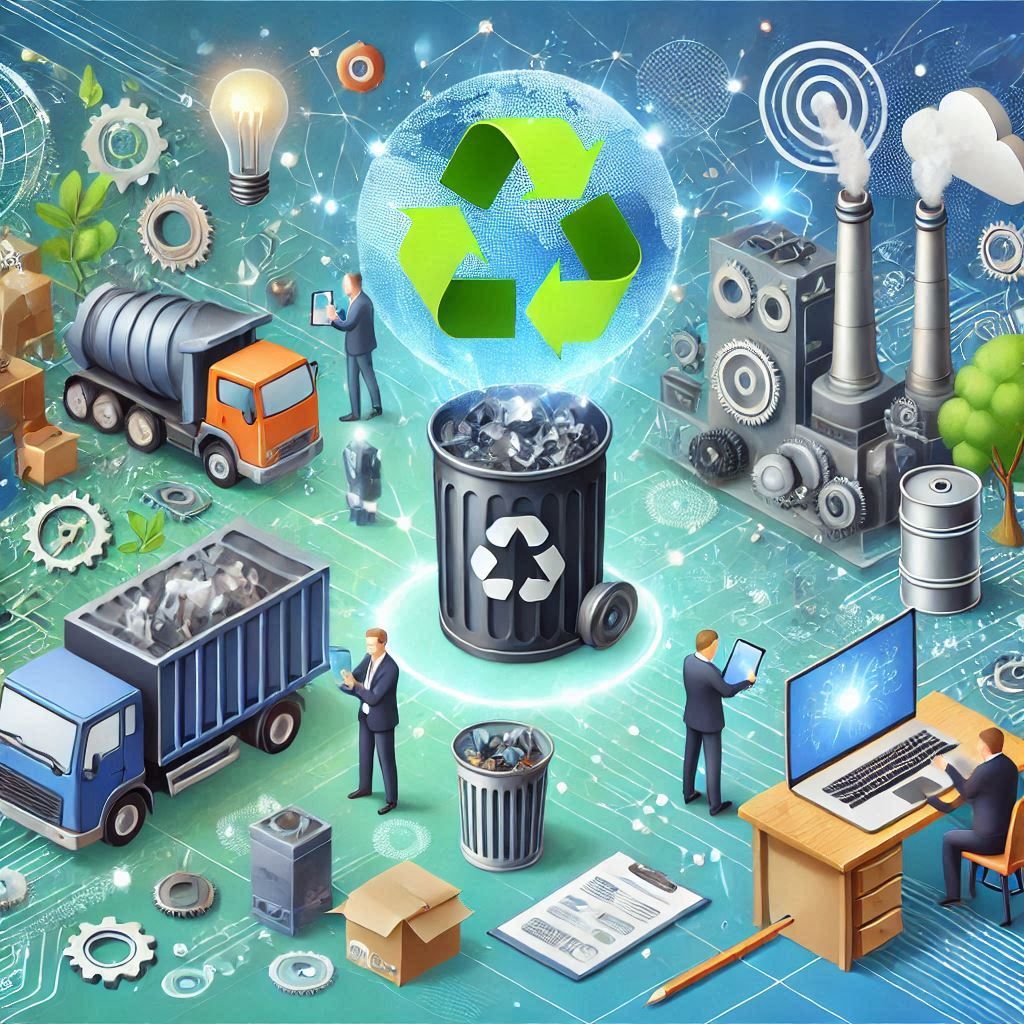
AI plays a huge role in improving recycling processes. By using machine learning, AI can identify materials more accurately, allowing recycling centers to sort recyclables faster and more efficiently. This means less contamination in recycling bins and a higher chance of items being reused.
Together, AI and IoT help minimize waste, improve recycling rates, and make the entire process more efficient. As a result, these technologies are playing a big part in reducing our environmental footprint and helping us live more sustainably.
Why Green Tech Is the Future of Sustainable Living
Green tech, powered by AI and IoT, is changing how we live and care for our planet. As climate change becomes a bigger concern, these technologies offer smart solutions to create a more sustainable future. AI helps us make smarter decisions by analyzing data in real time. For example, it can optimize energy use in homes, businesses, and cities, reducing waste and saving money. IoT connects everyday devices, like smart thermostats and energy-efficient appliances, to track and manage resources like water and electricity, making sure nothing goes to waste.

By using green tech, we can reduce our carbon footprint, use energy more efficiently, and cut down on pollution. It’s not just about saving the environment; it’s about making life better for future generations. With AI and IoT driving these changes, green tech is becoming a crucial part of how we live sustainably, ensuring a cleaner, greener world for all.
The Impact of AI on Reducing Carbon Footprints
AI is playing a big role in reducing carbon footprints by helping us use energy more efficiently and make smarter choices for the environment. One way AI helps is by analyzing data from homes, factories, and cities to find ways to save energy. For example, AI can control smart thermostats, adjusting the temperature only when needed, or optimize energy use in factories to reduce waste.
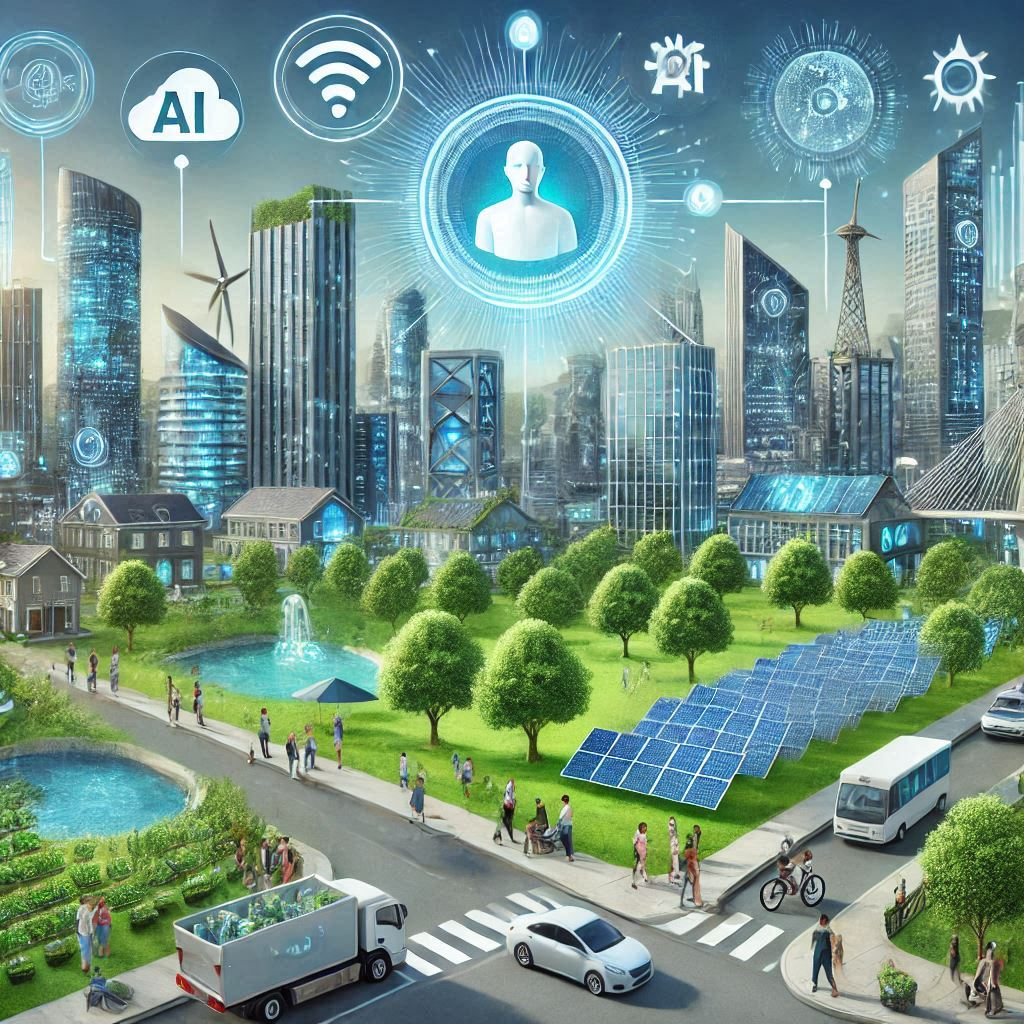
AI is also used to predict and optimize the use of renewable energy sources like solar and wind. By learning from weather patterns and demand, AI helps these systems generate energy when it’s needed most, reducing reliance on fossil fuels.
Another exciting way AI is helping is in transportation. With smart algorithms, AI helps reduce traffic congestion, making routes more efficient, and even powers electric vehicles that produce zero emissions.
Overall, AI is helping us reduce our carbon footprints in everyday life, contributing to a greener, more sustainable world.
How Smart Cities Are Using Tech to Go Green
Smart cities are using technology to create greener, more sustainable environments. With the help of AI and the Internet of Things (IoT), these cities can monitor and control everything from energy usage to waste management in real-time. For example, smart streetlights adjust their brightness based on traffic, saving energy. Sensors track pollution levels and adjust traffic flow to reduce emissions.
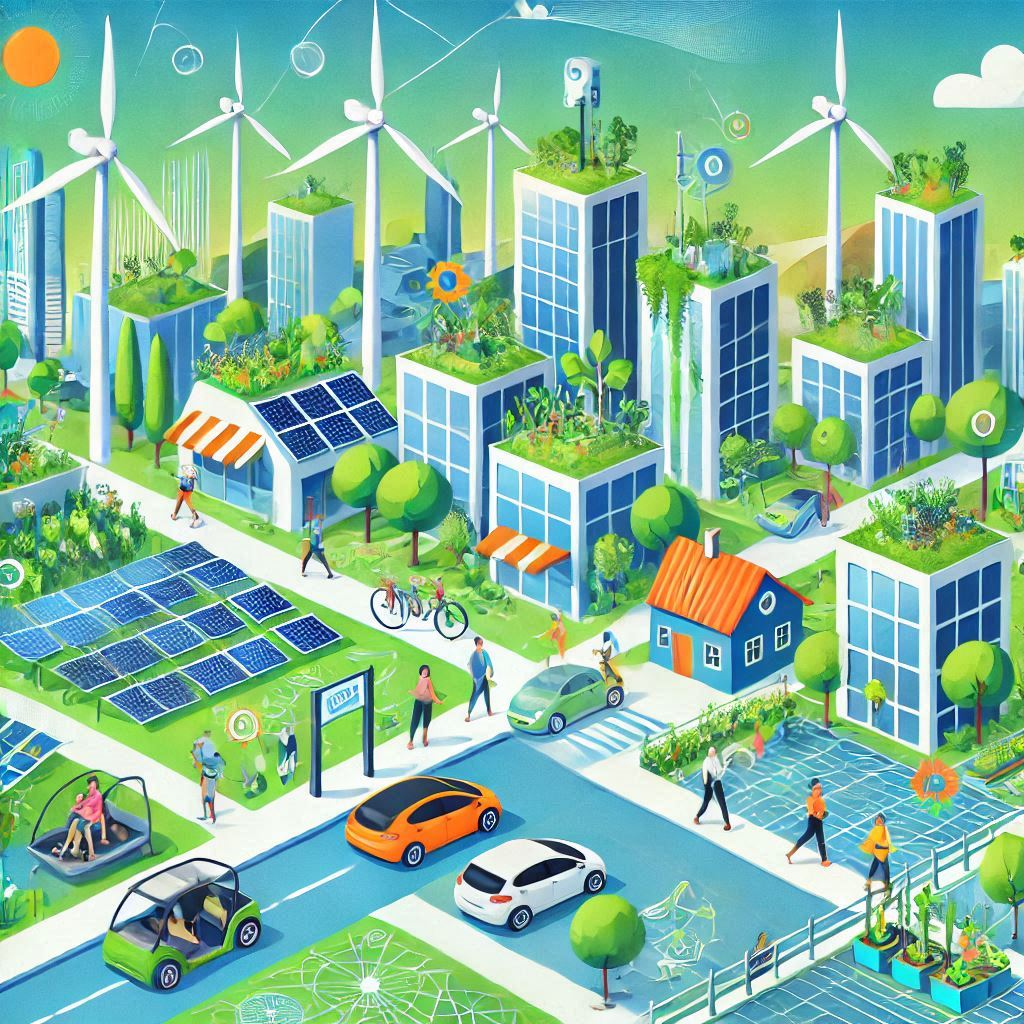
In addition, IoT devices help with smart water management, ensuring that water is used efficiently and waste is minimized. Smart buildings use AI to optimize heating and cooling, reducing energy consumption. Cities are also planting more trees and creating green spaces, and technology is helping track the health of these areas.
These innovations are helping reduce the carbon footprint of cities, making urban areas more livable and sustainable. By combining smart technology with green solutions, cities can pave the way for a more eco-friendly future.

